Abstract
The traditional electricity grid has remained the same for most of last century, without major archi-tectural improvements. However, its requirements, guidelines and goals do have changed, especially dur-ing the last few years, driven by the sustainability in energy generation and energy efficiency principles. Thus, taking greenhouse gases emissions and CO2 footprint reduction as key objectives and information and communications technologies as key enabler tech-nologies, a novel and revolutionary electric grid para-digm, the so-called Smart Grid, is emerging, in which energy efficiency and renewable generation play a central role. This paper presents an overview on the main requirements and features of Smart Grids to integrate energy efficiency, on the work done and to be done, on the enabler technologies, as well as on the expected impacts and the main benefits Smart Grids will bring.
Introduction
The electrical grid paradigm has changed dramatically during the last few years, presenting new characteristics and facing new challenges, such as an ageing infrastructure, increasing demand, as well as the large-scale integration of intermittent renewable resources and flexible loads such as electric vehicles. At the same time, the electrical grid must achieve a higher level of reliability and lower greenhouse gases emissions (IEA 2011). However, the present grid was not designed to meet such requirements and is not possible to address the future challenges with tools of the past. The basic topology of the existing electrical grid has remained unchanged, being a strictly hierarchical system with clear demarcations between its generation, transmission and distribution subsystems. It is unidirectional in nature, with an energy flow from the power plant to the customer without any real-time share of information between the consumption and generation points (Farhangi 2010). However, the defined scenarios for decarbonizing the energy sector will lead to important impacts on the electricity grid, namely high penetration of intermittent renewable technologies with more reliance on distributed gener-ation and higher demand for electricity (EPIA 2012).
The increasing share of variable renewable energy resources (mainly solar photovoltaics and wind power)stability, security and reliability (EURELECTRIC 2011). In addition, such new generation resources are deployed mostly as distributed generation, creating a more decentralized system, where the figure of the “prosumer” emerges. As a result, the scalability of the grid is improved and the energy flows, and so the losses, are reduced, but the complexity of managing such an infrastructure increases dramatically.The increasing energy consumption, in most countries, must be also properly addressed by the electrical grid, which must have new tools to optimize it and to promote energy efficiency, both in the supply and in the demand sides, through monitoring and control infrastructures based on sensors and actuators networks and demand response programs. Part of the new electricity consumption will be caused by deployment of electric vehicles (Faria et al. 2012). However, they can also be an important tool to the grid management with the possible control of the charging cycles and the use of the battery as a local energy storage device. At the same time, the improvements achieved on other energy storage technologies bring new solutions to the grid management. Thus, the control of consumption together with energy storage will ensure the needed flexibility to ensure the generation/consumption matching.
Therefore, the electric system is no longer unidi-rectional, since energy flows can occur in both di-rections between the grid and the customers’ facilities and the assumption that the demand for electricity dictates the amount of electricity produced no longer holds. Smart Grids are expected to address the major shortcomings of the existing grid and ex-plore the new resources. The Smart Grid still depends on the support of large central-station generation, but it includes energy storage and renewable energy gen-eration facilities in the different grid levels. In addi-tion, the Smart Grid needs to provide the utility companies with enhanced sensory and control capa-bility to ensure the full visibility and pervasive con-trol over their assets and services (EPRI 2011).
New challenges and resources
The increasing penetration of distributed generation, the growing energy demand, the large-scale deploy-ment of electric vehicles and the availability of new energy storage technologies are the main drivers of Smart Grids. They are not only creating new chal-lenges which cannot be solved by the traditional grid, but also offering new resources which can be part of the solution.
Distributed generation
The efforts to reduce greenhouse gases emissions related to electricity generation have been leading to a fast increase in the deployment of renewable generation, in particular photovoltaic and wind power. Such renewable energy sources are being deployed not only as bulk generation facilities but also as distributed local generation facilities connected to the electricity distribution grids or even to private consumption infrastructures (Claudy et al. 2011). Distributed generation has the potential to provide site-specific reliability improvement, as well as transmission and distribution benefits. However, the renewable generation resources have characteristics that differ from conventional energy sources. The output of wind and solar power is determined by random meteorological processes, outside the control of the generators or the system operators. Therefore, unlike conventional capacity, wind- and solar-generated electricity cannot be reliably dispatched or perfectly fore-casted, and exhibits significant temporal variability (Moura and de Almeida 2010a).
Electric power systems have been designed for more than a century ago in a top-down perspective, based on highly predictable bulk generation power plants following load variations, controlled by centralized systems. For customer-owned generation the utility generally does not have a choice in the distributed generation location, which influences the grid reliability. With increasing connection of renew-able generation sources at all voltage levels due to the mismatching between local generation (mainly photovoltaic) and consumption (Fig. 1), in some distribution grids, the power flow is inverting the way, flowing from the distribution network to the transmission network (Moura et al. 2012).
In the European Union the variable generation could represent up to 65 % by 2050 according to the EC’s (European Commission) Energy Roadmap (EC 2011). As penetration rates of variable generation increase over levels of 15 to 20 %, and depending on the electricity system in question, it can become increasingly difficult to ensure the reliable and stable management of elec-tricity systems relying solely on conventional grid architectures and limited flexibility (IEA 2011). Therefore, new monitoring and control tools are needed to increase the system flexibility and maintain stability and balance at the distribution grid level.
Energy demand
Over the last few decades, worldwide energy demand has increased due to industrial development and global economic growth, being the electricity the fastest-growing component of total global energy demand. In Europe, it is expected that electricity will double its share in the final energy demand from the current levels to 36–39 % in 2050, due to its increasing use in transports and buildings (EC 2011). In Europe, during the last few years, the electricity consumption in industry has not been increasing, but the same does not occur with the consumption in buildings. The main reasons for these different trends are twofold. On one hand, electricity consumption has been traditionally a well-identified problem in the industrial sector, since it translates into higher costs. On the other hand, electricity consumption in house-holds is not individually very significant; its true impact arises when it is summed up over millions of homes. In addition, the widespread utilization of new types of loads and the requirement of higher levels of comfort and services have also driven such increases in the electricity consumption in the residential sector (Firth et al. 2008).
Indeed, the electricity consumption breakdown in EU (European Union) households was recently char-acterized (de Almeida et al. 2011), showing clearly the increasing importance of electronic loads, which rep-resent more than 21 % of the overall consumption. Such loads are mostly entertainment and information and communications technologies (ICT) appliances with high standby consumption, which represent about 7 % of the total annual electricity consumption per household. Heating ventilation and air conditioning (HVAC) loads also show high consumption and an increasing penetration rate in households. Given those increasing consumptions and the difficulty in identifying the major contributors, in-house monitoring and control systems, with sub-metering capabilities, are needed to make information about unwanted consumptions available to end-users and to give the users some measure of automated control over those loads, thus enabling energy efficiency.
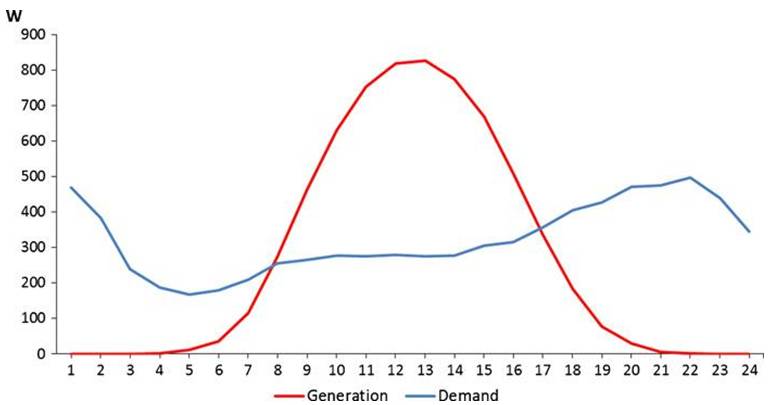
Fig. 1 Typical photovoltaic generation and demand pro-files in a residential building (Moura et al. 2012)
The baseload consumption in an EU average house-hold is fairly high, near 200 W, mostly due the cold appliances and HVAC loads (Fig. 2). Washing and drying appliances consume more than 16 % of the electricity with high consumption at peak hours, while they may be shifted to other periods. If properly controlled, such loads can be used as a demand response (DR) resource. The washing and drying appliances can be rescheduled to periods of lower energy consumption. The cold appliances, HVAC and water heating loads can be interrupted during shorts periods of time, without major reduction of service quality, to avoid the most unbalanced situations between generation and consumption.
In the past, the electrical system has been planned and operated under the assumption that the supply system must meet all customers’ energy use, and that is not possible to control the demand. However, that supposition starts to change in the 1980s with the emergence of a new approach to control a resource traditionally uncontrollable such as the load. Through the proper application of demand-side management technologies, and providing incentives to the consumers, it is possible to control the consumption so that it matches shortages in the conventional generation capacity or the uncontrollable dips and peaks of renewable generation.
DR technologies it is possible to directly or indirectly force a consumption reduction in critical situations, in a short time. Traditionally DR technologies were typically used to attend upon economic concerns related to balance supply and demand. However, nowadays they can be used to improve the system reliability, reducing instantaneously the energy consumption to prevent the problems that result from the intermittence of renewable generation. The idea behind DR is that if the marginal peak load price is higher than the value that a consumer gets out of the services derived from the electricity, he would be willing to modify the demand, if he is paid the peak price or slightly less instead (Sioshansi 2012). Today, the utility customers have the opportunities to manage their energy use in response to signals, which can be incentive-based demand response and time-based rates (Gellings 2009).
There are some works (e.g., [25]–[27]) in integrating DER generation into the traditional centralized carbon fuel based generation power grid. These energy sources include biomass etc. A key observation made in [25] is that existing power grids were designed in a one-direction radial mode without considering the communication with the emerging distributed renewable resource generation. In [26] it discussed the broader implications of the social acceptance of these new energy gen-eration technologies, as they represent a significant departure from incumbent approach of traditional monolithic large scale energy generation. In addition, the implications of regulatory and economic factors also contribute to potential take-up and various deployment models to increase the adoption of these distributed renewable resource generators [27]. Every DER includes an Electronic Power Processor (EPP) to govern the power exchange with the smart grid and Switching Power Interface (SPI) to control the currents drawn from the smart grid. Such distributed EPPs and SPIs should perform cooperatively to take full advantage of smart grid potentiality (exploitation of renewable energy sources, power quality and transmission efficiency). To achieve this goal dif-ferent approaches can be adopted, depending on the available communication capability. In [28] it discussed various control solutions applicable in absence of supervisory control, e.g., in residential micro-grids, where communication is possible between neighbor units only (surround control) or is not available at all (plug & play control). In micro-grids, where number and type of DERs and loads is unpredictable and may vary during time, cooperative operation can be achieved by simple cross-communication among neighbor EPPs, without centralized supervisor. In [29], it describes principles of co-operative operations with existing information and communication architectures, which allows exploitation of micro-grid capabilities without additional infrastructure investments.

Fig. 2 Load profile of an EU average household (de Almeida et al. 2011)
Electric vehicles and energy storage
The electrification of transport will be responsible for a large increase of the electricity consumption. Europe has a target of 10 % share of electric vehicles by 2020, which need to be charged through the electrical grid (EURELECTRIC 2011). IEA estimates that the trans-port sector will make up 10 % of overall electricity consumption by 2050 (Fig. 3) due to a significant increase in electric vehicles (EV) and plug-in hybrid electric vehicles (PHEV).
The impact of electric vehicles on the distribution network load diagram will require a new approach in load control, since if the vehicle charging is not managed intelligently, it could increase peak load and require major infrastructure investments to ensure the system reliability. However, the electric vehicles, due to their storage capacity, have a huge potential as controllable loads, drawing power and storing energy when not in use, being parked during the main part of the day/night—at home or at work parking lots. Based on these singular characteristics, PHEVs as controllable loads can sup-port the integration of unpredictable intermittent renewables and contribute to the system stability, namely by provision of ancillary services (Goebel and Callaway 2012).
Smart Grid technology can ensure the smart charging of electric vehicles, during periods of low demand and/or high generation. Over the long-term, it could also enable electric vehicles to feed electricity stored in their batteries back into the system when needed (IEA 2011). Additionally, other energy storage technologies, such as batteries and supercapacitors are already available and presenting increasing performance and decreasing costs.
The need of new energy storage technologies is also due to the alternative planar structure of the Smart Grid. The traditional grid already has energy flexibility (hydropower dams), but it is in the same place and works in the same manner of the generation, centralized from top to bottom, which limits the storage capacity. However, the new storage devices do not need to be located near to the power plants and can be installed in any point of the grid. That choice enables the support to the integration of intermittent energy and congestion mitigation. The new energy storage technologies associated with the Smart Grid capabilities can ensure the matching between generation and consumption in different grid levels, not only in large scale but also in each neighbourhood or building.
The impact of electric vehicles on the distribution network load diagram will require a new approach in load control, since if the vehicle charging is not managed intelligently, it could increase peak load and require major infrastructure investments to ensure the
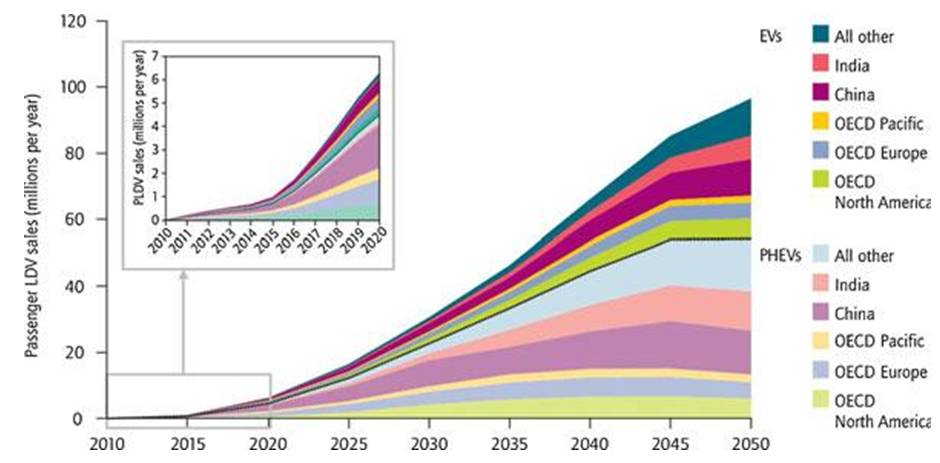
Fig. 3 Deployment of electric vehicles and plug-in hybrid electric vehicles (IEA 2011)
Evolution of smart grids
The metering side of the distribution system has been the focus of the Smart Grid investments so far, with the initial introduction of one-way automated meter reading (AMR) systems to read meter data (Fig. 4). However, due to its one-way communication system, AMR systems do not allow the transition to the Smart Grid, due to the absence of control capabilities. In a second stage, the advanced metering infrastructure (AMI) has been used to provide a two-way communication system to the meter, as well as the ability to ensure load management and revenue protection (Farhangi 2010).
The next step is the leverage of the AMI infrastructure to implement distributed command and control strategies with pervasive control and intelligence across all geographies, components and functions of the system (Farhangi 2010). The evolution of the Smart Grid will then be ensured by the introduction of new layers to enable more advanced functionalities. The basic layer is the de-scribed monitoring and automated network. The second layer is the connection between participants, integrating customers and energy services providers into the network. Then, a layer to sense and response is needed to share information, analysing and acting upon it to balance all the resources in real time. Finally, the layer to analyse and optimize will manage the network using rules, constrains and intelligent agents (IBM 2011).
Such layers will therefore enable the development of the different Smart Grid technological areas (Fig. 5): wide-area monitoring and control, information and communications technology integration, renewable and distributed generation integration, transmission enhancement applications, distributed grid management, advanced metering infrastructure, EV charging infrastructure and customer-side systems (IEA 2011).
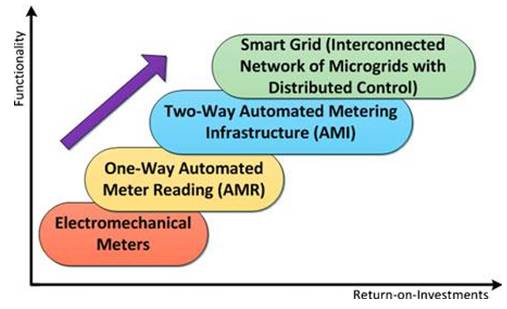
Fig. 4 The evolution of the Smart Grid (Farhangi 2010)
During the evolution of Smart Grids, three different generations can be identified: Smart Grid 1.0, Smart Grid 2.0 and Smart Grid 3.0. The Smart Grid 1.0 (today’s first steps) will transform existing services using advanced communication to ensure pre-paid metering, in-home displays, intelligent disconnect, fine-grain load control, advanced outage management, bi-directional metering and demand response.
Smart Grid 2.0 (grid resident intelligence) will en-able future services and foster innovation with applications such as micro-grids/distributed generation, intelligent street lighting, vehicle to grid/grid to vehicle, storage/distribution of renewable generation, fault prediction/outage prevention, energy asset management and automatic demand response (Ossel 2011). Smart Grid 3.0 (grid leveraged applications) will make the grid completely manageable, extending the applications to take full advantage of the grid resident intelligence. The advanced Smart Grid will become not just a way to deliver electricity more efficiently, but also an entirely new social and transactional plat-form with new business models, applications, services and relationships (Carvallo and Cooper 2011).
Smart grid technologies
The development of Smart Grids will be ensured by the deployment of several different technologies. Since the Smart Grids are mainly based on information sharing, the new information and communication technologies are their vital enabler. The development of the first levels of smartness is then ensured by technologies such as smart meters, smart appliances and monitoring and control systems. Finally, standardization is needed to guarantee the integration and interoperability of different technologies.
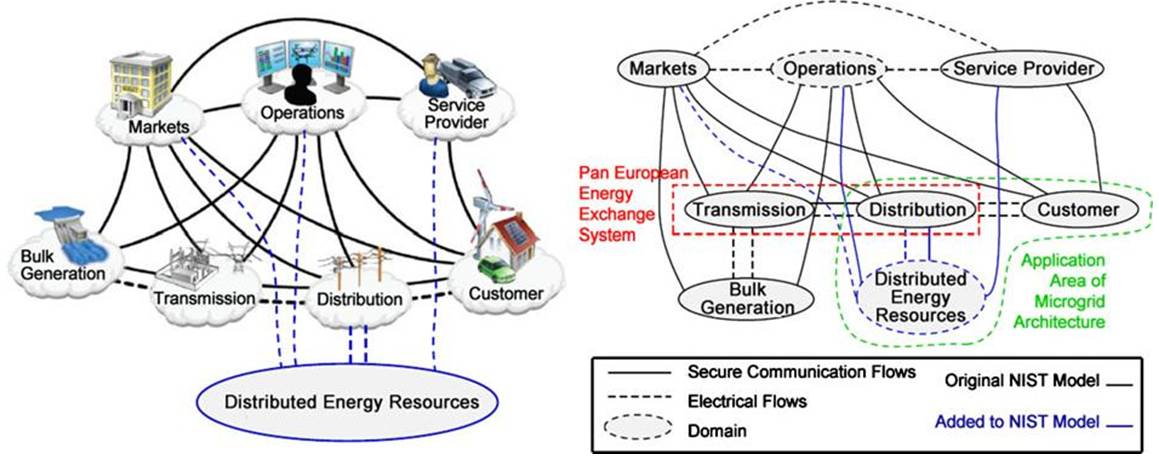
Fig. 5 Comparison of NIST Smart Grid conceptual model and CEN/CENELEC/ETSI Smart Grid conceptual model
Information and communication technologies
ICT and M2M (machine-to-machine) communications will definitely play a key role to make the Smart Grid a reality, since they will enable the required bidirectional communication between the high volume of devices to be monitored and controlled, and the end-users and the information systems where the intelligence resides. The typical M2M communications architecture for the distribution domain of the Smart Grid comprises different network segments, namely the Home Area Network (HAN), the Building Area Network (BAN), the Access Network (AN) and the Neighbourhood Area Network (NAN), as shown in Fig. 9 (Fadlullah et al. 2011). However, the BAN and the AN are auxiliary network segments which may be even skipped (Lopez et al. 2011).
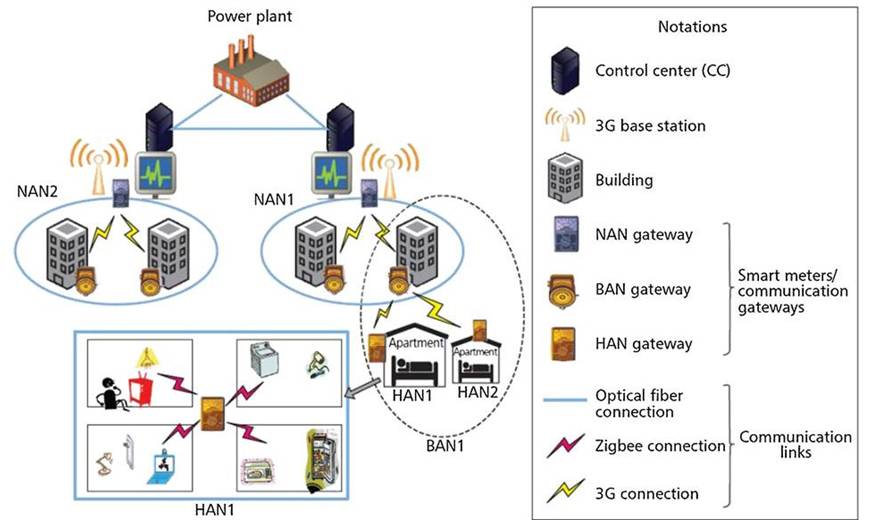
Fig. 6 Typical M2M architecture for the Smart Grid (Fadlullah et al. 2011)
Due to the huge number of devices which Smart Grids will involve, cost and energy consumption are two key constraints to be taken into consideration when deciding the most appropriate technologies. On the one side, the cost of deploying and managing such monitoring and control infrastructure has to be lower than the cost of building and maintaining new peak power plants and of increasing the electrical grid capacity. On the other side, the energy consumption of such monitoring and control infrastructure has to be lower than the energy savings ensured by the system itself. In addition, some other features, such as data rate or range, need to be considered depending on the specific requirements of each communications segment.
Based on these considerations, there are some communications technologies that fit specific communications segments better than others. Standing out among the wireless communications technologies for HAN are Zigbee and Bluetooth, since they are low-power communication technologies which perfectly fit the range and data rate requirements of this network segment. Indeed, there are commercial energy management plat-forms currently available in the market for dwellings and SOHO (Small Office Home Office) using Zigbee (e.g. Cloogy (Cloogy 2012), GreenWave Reality Energy Management (GreenWave Reality 2012)) and Bluetooth (e.g. Sunny Home Manager (SMA 2012)).
CONCLUSION
The Smart Grid represents a completely novel electric grid paradigm that drastically breaks with the basis of traditional electric grid. Thus, the communications and energy flows are no longer unidirectional, but bidirec-tional and in real-time, and the customers and prosumers become important players. The road to the Smart Grid is plenty of challenges, but the benefits it will bring well deserve undertaking and overcoming them. In particu-lar, lower utility operating costs, lower consumer costs and better social utilization can be achieved. Energy efficiency, both at demand and at supply side, will play a key role in doing so successfully.
REFERENCES
1. AHAM (2009) “Smart Grid White Paper: The Home Appliance Industry’s Principles & Requirements for Achieving a Widely Accepted Smart Grid”, Association of Home Ap-pliance Manufactures.
2. Brew M., Darbari F., Crockett L.H., Waddell M.B., Fitch M., Weiss S., Stewart R.W. (October 2011) “UHF White Space Network for Rural Smart Grid Communications”, IEEE International Conference on Smart Grid Communications (SmartGridComm).
3. Carvallo A. and Cooper J. (2011) “The Advanced Smart Grid Edge Power Driving Sustainability”, Artech House.
4. CEN/CENELEC/ETSI (August 2012) “Smart Grids Coordina-tion Group Technical Report Reference Architecture for the Smart Grid”, Version 2.0.
5. Claudy, M. C., Michelsen, C., & O’Driscoll, A. (2011). “The diffusion of microgeneration technologies—assessing the influence of perceived product characteristics on home owners' willingness to pay”. Energy Policy, 39(3), 1459–1469. March.
6. A. Vaccaro and D. Villacci, “Performance analysis of low earth orbit satellites for power system communication,” Electric Power Systems Research, vol. 73, pp. 287-294, 2005.
7. IEC-TC 57, “Communication networks and systems in substations- Part 1: Introduction and overview,” IEC Standard IEC/TR 61850-1, Edition 1.0, 2003.
8. J. G. Cupp and M. E. Beehler, “Implementing Smart Grid Communi-cations” TECHBriefs 2008 No. 4, pp. 5-8.
9. IBM. (2011). “The Value of Smarter Energy: Orchestrating the Network End-to-End”, IBM Center for Applied Insights.
10. Faria, R., Moura, P., Delgado, J., & de Almeida, A. (2012). A sustainability assessment of electric vehicles as a personal mobility system. Energy Conversion and Management, 61(1), 19–30.